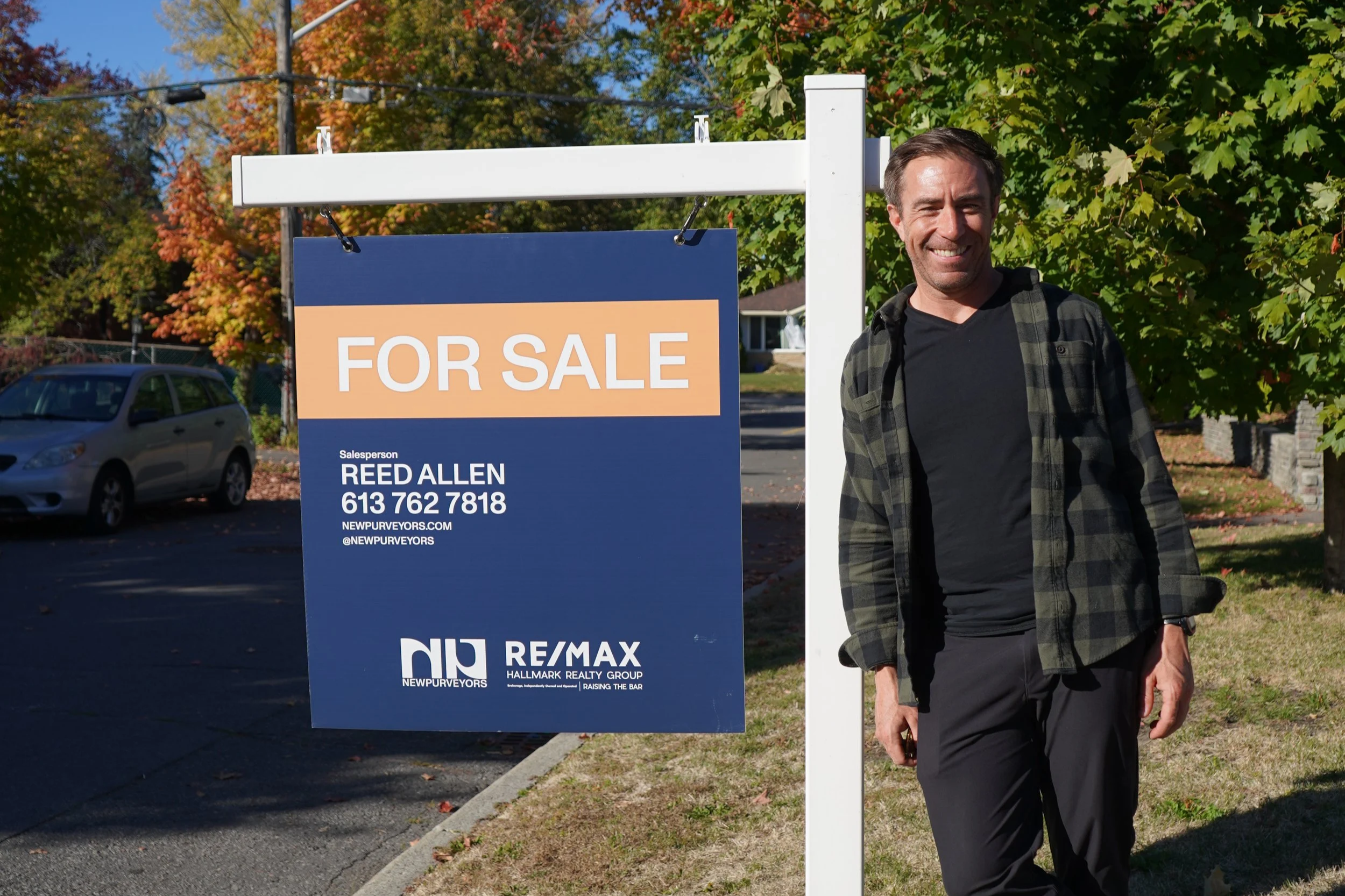How to Read a Real Estate Listing Like a Pro
By Kevin Morris, Real Estate Agent at New Purveyors, RE/MAX Hallmark Ottawa
If you’ve ever read a real estate listing and thought, “Wait… what does that actually mean?” — you’re not alone. After years of helping clients buy and sell in Ottawa, I can tell you that listings can sometimes sound like a secret language. Between phrases like “cozy,” “great potential,” and “prime location,” it can be tough to tell what’s truly valuable and what’s just marketing fluff.
Here’s how I read a listing — and how you can too — to quickly understand what’s real, what’s worth a look, and what’s probably not worth your Saturday afternoon.
Start with the Address (and Then Zoom Out)
The first thing I look at is location. Not just the neighbourhood, but the actual spot on the map. Ottawa’s neighbourhoods can change street by street — especially downtown. A listing that says “Glebe-adjacent” might really be closer to the Queensway than Lansdowne Park. “Steps from the ByWard Market” could mean “above a bar.”
Use Google Maps or WalkScore to check how close the home is to transit, grocery stores, parks, and schools. In Ottawa, listings in areas like Westboro, Old Ottawa South, and Hintonburg often use lifestyle-focused language like “walkable,” “trendy,” or “vibrant.” That’s a good sign if you’re after convenience — but be prepared to pay a premium.
If you’re looking further out, like in Barrhaven, Kanata, or Orleans, pay attention to keywords like “family-friendly,” “quiet street,” or “close to amenities.” Those usually indicate suburban comfort rather than downtown excitement.
As someone who’s written hundreds of listings myself, I can tell you the language is intentional. It highlights the positives and softens the negatives. When I see “great opportunity,” I always ask — for who? Investors? DIY buyers? Downsizers? The clues are usually in the adjectives.
Watch for Keywords (and What They Actually Mean)
Every real estate agent has their own writing style, but there are a few words that tend to mean the same thing no matter who wrote them. Once you’ve seen a few hundred listings, you start to spot the patterns pretty quickly.
Take “cozy” — that almost always means small. If the listing mentions “cozy living space,” think compact, not spacious. “Charming” usually means older, possibly a little outdated, but with character or original features that some buyers love. “Up-and-coming neighbourhood” translates to an area that’s still developing — you might find new builds mixed with older homes or construction nearby.
If you see “needs TLC” or “great potential,” that’s code for “renovations required.” You’ll want to budget time and money for updates. “Open concept” typically means walls have been removed to create flow, but if it’s an older home, it’s worth confirming that any structural work was done with proper permits.
“Sun-filled” or “bright” is generally a good thing — usually meaning south-facing windows or great natural light, which makes a huge difference in Ottawa’s long winters. “Unique layout” can go either way; sometimes it’s a creative, modern design, and sometimes it’s just awkward. And when you see “turnkey,” it means move-in ready — everything’s done for you.
Finally, “priced to sell” signals a motivated seller. They’re ready to move, and that can work in your favour if you’re ready to negotiate.
As someone who’s written hundreds of listings myself, I can tell you the wording is strategic. It highlights the best parts of a home while softening what might be drawbacks. When I see a phrase like “great opportunity,” my first question is: “for whom?” Investors, first-time buyers, or renovators? The language always tells a story — you just have to know how to read it.
Photos Tell Half the Story — Sometimes the Wrong Half
Ottawa listings often feature gorgeous professional photography (especially with teams like ours at New Purveyors, since we hire pros for every listing). But photos are marketing tools, not property inspections.
Wide-angle lenses can make small rooms look massive, and careful editing can brighten even the darkest basements. If a home looks too perfect, assume some touch-ups were done.
When I review photos, I check the details most people skip — baseboards, flooring transitions, ceiling texture, and window condition. Those small clues often reveal more than the wide shots. If blinds are always closed, there might be an undesirable view. If every photo hides the exterior, the curb appeal might not match the interior.
Look at the Layout and Measurements
Square footage tells you how big a space is — not how it feels. A 900-square-foot condo in Centretown can feel spacious and airy, while another 900-square-foot condo in Kanata might feel chopped up or narrow depending on the layout.
If the floor plan is available (and it should be — we always include one), pay attention to how usable the space is. Are bedrooms on opposite sides of the unit for privacy? Is there a real dining area or just a small nook off the kitchen?
Pro tip: In Ottawa, a one-bedroom condo above 750 square feet usually feels comfortable. Two-bedrooms under 850 square feet can start to feel tight, especially if you plan to work from home.
If there’s no floor plan at all, that’s often a sign the layout isn’t ideal. When that happens, I’ll dig into similar units in the building to get a sense of the flow before booking a showing.
Read Between the Lines in the Description
A solid listing tells a story — who the home is for, what makes it special, and why it’s priced the way it is. If it’s filled with vague phrases like “beautiful home in a desirable area,” it might lack real selling points.
When I read listings, I always look for:
Recent updates (roof, furnace, windows, appliances)
Ownership type (freehold, condo, or parcel of tied land)
Condo fees and what they include
Heating type and year built
Older homes in areas like Vanier or Lowertown might have oil or electric baseboard heating — which can increase your monthly costs. Homes with newer gas furnaces tend to be more efficient.
Also, watch for the phrase “no conveyance of offers until [date].” That means the seller has set an offer presentation day — common in hot spots like The Glebe, Westboro, and Hintonburg. It’s not necessarily bad, but it means competition is expected.
Check What’s Not Said
Silence can say a lot.
If the listing doesn’t mention parking, assume there isn’t any. If it skips details about the basement, it might be unfinished or used for storage only. If the condo description leaves out amenities, they may be minimal or outdated.
As a buyer’s agent, this is where I come in. I can see the “agent remarks” section — the private notes other agents write that don’t appear on public sites like REALTOR.ca. Those often include key details about offer instructions, repairs, or conditions that the public can’t access.
Compare the Numbers
Once you’ve decoded the language, compare it with reality. I always check at least three recent sales nearby to gauge whether the price makes sense.
For example, a two-bedroom condo in Little Italy typically ranges from $520,000 to $620,000 depending on view, finishes, and parking. If a listing comes in much higher than that, there should be a clear reason — like a premium corner unit, a massive balcony, or custom upgrades.
Also factor in property taxes, condo fees, and utilities. A lower asking price can sometimes be offset by high monthly costs.
The Bottom Line
Reading listings like a pro isn’t about catching agents in the act — it’s about saving yourself time and frustration. Once you understand the language, you’ll know which homes deserve a showing and which ones you can skip with confidence.
If you’re ever unsure what a listing really means, send it my way. I’ve toured hundreds of homes across Ottawa — from Centretown condos to Barrhaven family homes — and I’m always happy to help clients separate reality from real estate jargon.
Kevin Morris is a real estate agent with New Purveyors, RE/MAX Hallmark Ottawa. He helps buyers and sellers navigate the market with clarity, confidence
Kevin Morris
kevin@newpurveyors.com






























